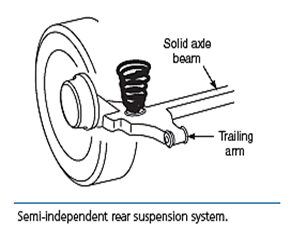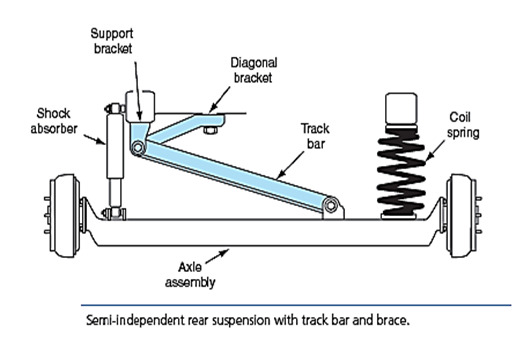←
Automobile Engineering
Semi-independent Rear Suspension Systems
Introduction:
A semi-independent rear suspension allows some individual rear wheel movement when one rear wheel strikes a bump. Many front-wheel-drive vehicles have a semi-independent rear suspension that has a solid axle beam connected between the rear trailing arms.
Semi-independent rear suspension system 
- A solid axle beam is usually a transverse inverted U-section channel connected between the rear wheels in a semi-independent rear suspension system.
- When one rear wheel strikes a bump, this beam twists to allow some independent wheel movement.
- Some of these rear axle beams are fabricated from a transverse inverted U-section channel.
Coil springs in Semi-independent rear suspension system

- In other semi-independent rear suspension systems, the coil springs are mounted separately from the shock absorbers.
- Coil-spring seats are located on the trailing arms, and the shock absorbers are connected from the trailing arms to the chassis.
- A cross-member connected between the trailing arms provides a twisting action and some independent rear wheel movement.
Track bar Semi-independent rear suspension

- Some semi-independent rear suspension systems have a track bar connected from a rear axle bracket to a chassis bracket.
- In some applications, an extra brace is connected from this chassis bracket to the rear upper cross-member.
- The track bar and the brace prevent lateral rear axle movement.